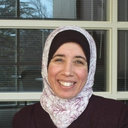Phytochemical studies and cytotoxicity evaluations of Colchicum tunicatum Feinbr and Colchicum hierosolymitanum Feinbr (Colchicaceae): two native Jordanian meadow saffrons.
Mots clés
Abstrait
As a part of our continuing investigation of Jordanian Colchicum species, the biologically active components of Colchicum hierosolymitanum Feinbr and Colchicum tunicatum Feinbr (Colchicaceae) were pursued. The brine shrimp lethality test (BSLT) was used to direct the fractionation and isolation of active components. Five and four known colchicinoids were isolated and characterized from C. tunicatum and C. hierosolymitanum, respectively. The known colchicinoids, reported for the first time from these two species are: (-)-colchicine (I), 3-demethyl-(-)-colchicine (II), (-)-cornigerine (III), beta-lumicolchicine (IV), and (-)-androbiphenyline (V) from C. tunicatum, and (-)-colchicine (I), 2-demethyl-(-)-colchicine (VI), (-)-cornigerine (III), and beta-lumicolchicine (IV) from C. hierosolymitanum. The chemical structures of the isolated compounds have been elucidated using a series of spectroscopic and spectrometric techniques principally; 1D-NMR (1H and 13C) and low resolution EI-MS and APCIMS. All pure compounds were evaluated for cytotoxicity against three human cancer cell lines; MCF-7 human breast carcinoma, NCI-H460 human large cell lung carcinoma, and SF-268 human astrocytoma. (-)-Colchicine (I) and (-)-cornigerine (III) were found to be the most bioactive of the identified compounds with EC50 values in the range of 0.016-0.097 microM.



